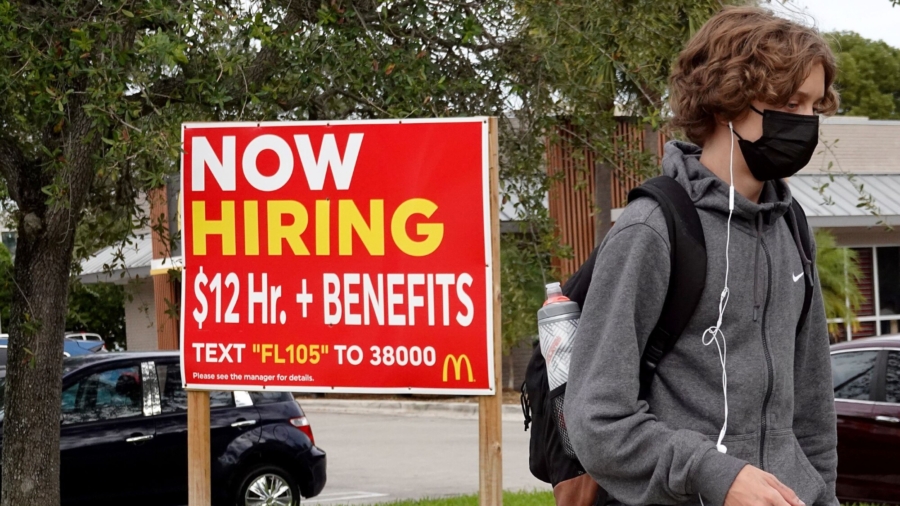Overall optimism among small-business owners edged down in September while the level of confidence in the six-months-ahead outlook for business conditions fell to a nine-year low as inflation and hiring difficulties took a bite out of sentiment, according to the National Federation of Independent Business (NFIB).
The NFIB’s so-called optimism index fell by one percentage point to 99.1 in September, according to the group’s Oct. 12 Small Business Economic Trends report (pdf).
The downtick in overall optimism came alongside a sharper five-point drop in the six-months-ahead outlook for business conditions. The forward-looking index of future expectations fell to a reading of negative 33 percent, the lowest number since December 2012.
“Small business owners are doing their best to meet the needs of customers, but are unable to hire workers or receive the needed supplies and inventories,” NFIB Chief Economist Bill Dunkelberg said in a statement.
Hiring woes, supply chain problems, rising input costs, and materials shortages have emerged as major issues in recent months, holding back the pace of the economic recovery and fueling fears of persistent stagflation—where inflation stays stubbornly high while economic growth slows.
“Supply chains are still in disarray, with ships and containers piling up on the coasts but only slowly being unloaded and distributed to businesses as truck drivers are in short supply,” the report’s authors wrote. “Inflation is running strong but the Federal Reserve is only running away.”
The NFIB report showed that 51 percent of small business owners in September reported job openings that could not be filled. This is a one percentage point increase from August and a 48-year record high for the third consecutive month. The historical average for the NFIB’s unfilled job openings measure is 22 percent.
“Owners are clearly trying to hire, but are not being very successful in spite of paying higher wages,” the report’s authors wrote. A net 42 percent of small-business owners reported raising compensation in September, up one point from the prior month and the highest reading in 48 years.
Labor costs and applicant quality remained problematic for small-business owners, with the percentage of owners identifying these as their top problem hitting a record high last month.
While the percentage of owners who said they raised prices in September fell by three points to a still-high 46 percent, the percentage of those who said they plan to raise prices in the next three months rose two points to 46 percent.
“In the meantime, inflation is squeezing profits (the major source of operating capital for small firms) so firms are raising selling prices. Just what policies Washington will follow remains uncertain, and so does the future,” the authors of the report wrote.
Economist Nouriel Roubini, renowned for his gloomy-yet-accurate forecast of the 2008 financial crash—a prediction he made at a time of peak market exuberance—told Bloomberg in a recent interview that he thinks the Fed will “wimp out” and “postpone any finishing of tapering or raising rates” if economic growth slows and markets sell off as they did in the fourth quarter of 2018.
Roubini said he believes stagflation will persist for several quarters and that the core PCE inflation gauge, the Fed’s preferred pricing measure, will stay above 3 percent in 2022. That’s in sharp contrast to Fed policymakers, who in their most recent economic projections predicted core PCE would come in at 2.3 percent next year.
From The Epoch Times


